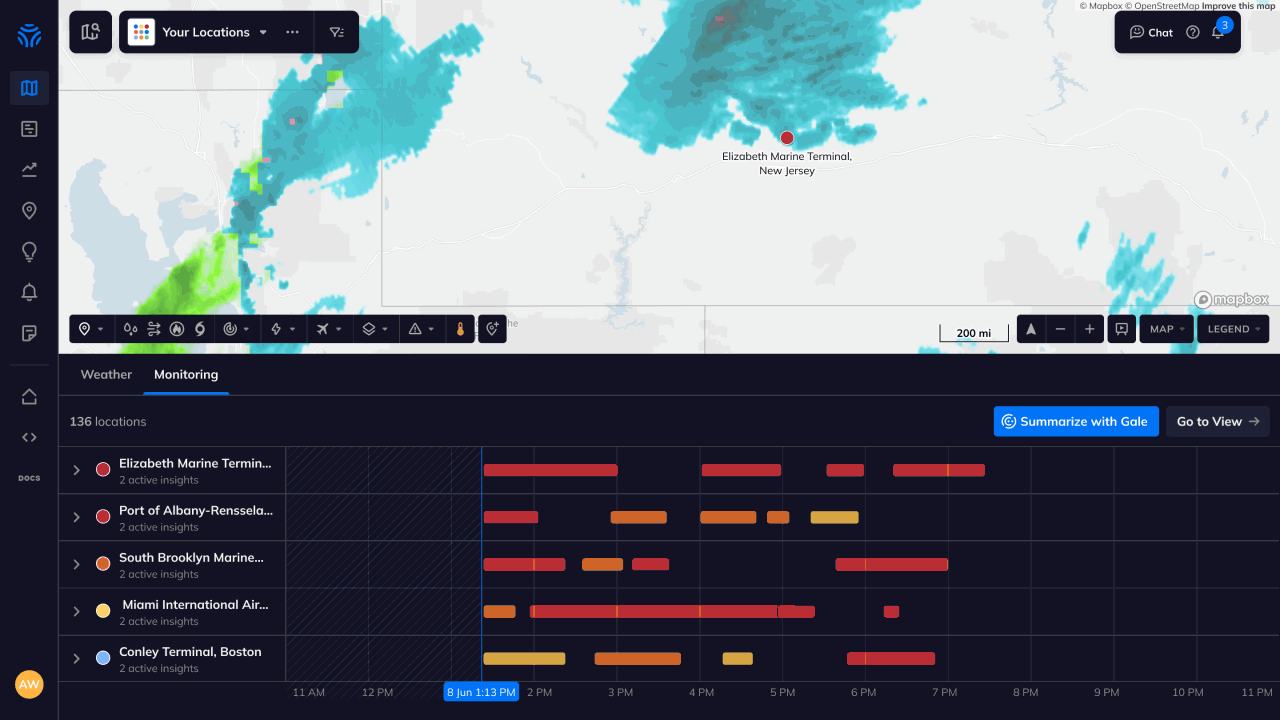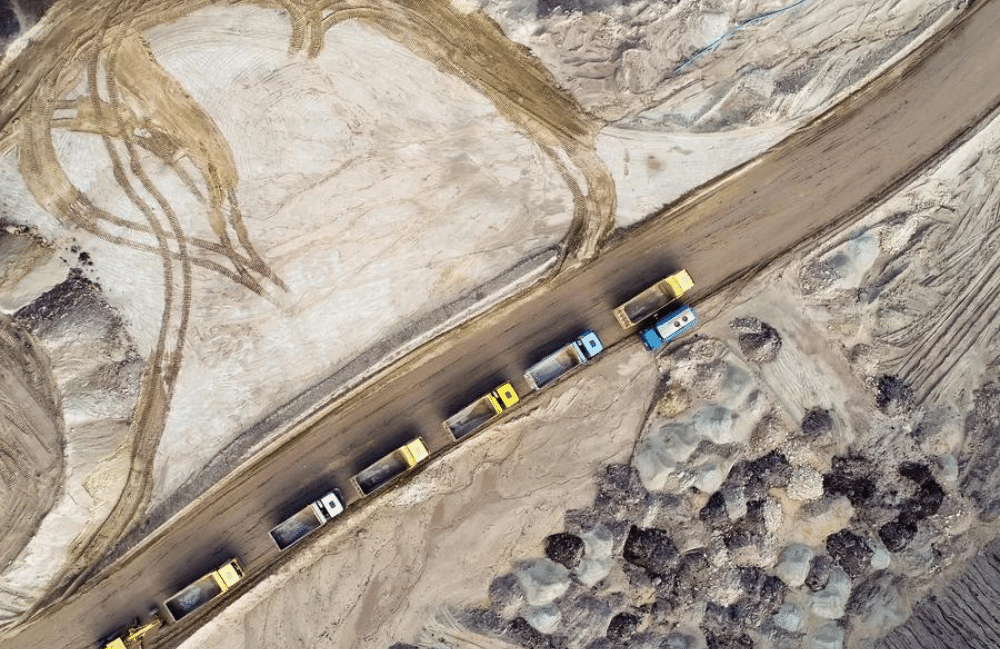This article was originally posted on Mining Digital in May 2023.
The mining industry is undergoing a significant transformation with Tomorrow.io’s weather forecasting technology
The increasing digitization of mines has enabled the industry to improve the efficiency of operations through a prevention-over-treatment model.
It is through this exact model that Tomorrow.io is empowering mining operators with its weather intelligence platform.
Understanding Weather Risks in Mining
The weather affects almost all aspects of mining operations, especially blasting, due to its direct effects on safety and effectiveness and its potential environmental and community impacts. Most commonly, These challenges can be summarized into two main issues:
- Lightning-related disruptions: Inaccurate weather forecasts can cause unnecessary work stoppages and safety hazards for workers, reducing overall blasting productivity and efficiency.
- Wind-related community concerns: The wind disperses dust clouds and debris from blasting, which may result in air quality issues and complaints from neighbooring areas, leading to strained relationships between communities.
Why Traditional Forecasts Aren’t Enough
Currently, most major mining organisations rely on a combination of traditional forecasting methods (e.g. National Weather Service reports) mixed with reactionary measures to manage weather-related threats. While these sources provide a general overview of weather conditions, they fall short in key areas:
- Lack of specificity and actionability: Traditional weather sources offer broad, raw predictions that do not cater to the unique location and decision-making needs of mining operations. This lack of specificity can lead to incorrect or inefficient operational choices.
- Inadequate lead time: Conventional forecasts may not provide enough advance notice for mining companies to make proactive decisions regarding their operations, particularly for activities like blasting, which require precise planning and scheduling.
- Insufficient focus on critical factors: Traditional forecasts may not emphasize the weather factors most relevant to mining operations, such as wind direction, wind speed, and lightning risks. This lack of targeted information can result in suboptimal decision-making and increased operational risks.
Optimizing with AI-Backed Weather Intelligence
Thankfully, the technology needed to adapt to weather impact at scale now exists.
The unpredictability of weather is increasing due to the climate crisis and so it is necessary to understand and prepare for the effects of extreme conditions. Having the knowledge and tools in place will be crucial worldwide, across people, businesses and governments.
Meet Tomorrow.io’s AI-backed weather intelligence—technology that gives mining companies a competitive edge to make more informed decisions in various aspects of their operations.
Ensuring community responsibility
Improving ESG strategies is incredibly important for mining companies—community consideration is no longer an innovative vision, but a strategic imperative.
Mining companies that address climate change through sustainable performance and emission reduction have valuations that are nearly 20% greater than their competitors. A commitment to ESG standards ultimately impacts business and profit, but is necessary for long-term climate adaptation.
In particular, to minimize the impact of blasting on the surrounding communities, mines should consider conducting an analysis of historical weather data to determine the best times for blasting in each season, such as when wind speeds are highest. Then, weather intelligence can empower teams to identify optimal and non-optimal blasting conditions up to 14 days in advance for improved safety and efficiency.
By leveraging Tomorrow.io, mines can plan their blasting activities in advance, taking into account any weather anomalies that may arise during typical blasting hours.
For instance, if wind direction suddenly changes during the usual 11 am – 2 pm blasting period, they may choose to postpone the activity to avoid generating dust clouds that may be perceived as “pollution”.

Tomorrow.io provides hyperlocal monitoring and predictive insights that allow teams to identify optimal and non-optimal blasting conditions up to 14 days in advance.
Increasing efficiency in the supply chain
Implementing weather intelligence can also help mining companies optimize supply chain efficiency and reliability.
Specifically, this is done by integrating weather insights into supply chain management, with accurate, real-time weather data to help anticipate and mitigate weather-related risks, such as road closures, port shutdowns, and other transportation disruptions.
- Inefficient crew scheduling can cost mines $15,000 per day in operational losses or significantly more depending on the size of the operation.
By accessing weather impact alerts, mining companies can confidently schedule crew shifts, reducing cancellations and preventing project delays.
Safety first
Preventing asset damage and ensuring the safety of miners are of the utmost importance to mining operations.
In the event of unforeseen rain or lightning, work crews may be unable to work due to hazardous conditions – unexpected weather can result in unnecessary expenses, including lost wages and project delays.
Tomorrow.io’s automated monitoring system, analytical alerts and insights can assist mining safety executives in proactively identifying potential hazards. This can result in adherence to regulations, a lowered risk of legal repercussions and fines, and an overall improvement in environmental preservation.
Besides their Weather API and SaaS platform, Tomorrow.io also offers the world’s first weather and climate-generative AI called Gale. Backed by cutting-edge AI and machine learning, Gale synthesizes millions of data points from Tomorrow.io’s renowned weather and climate insights into simple language, offering digestible mining-specific insights.

Real-time weather intelligence and weather AI can also help EHS managers avoid potential weather-related incidents – such as spills and pollution – and take necessary precautions to minimize their impact on the environment, reducing the risk of non-compliance with regulations and any associated fines.
“With billion-dollar weather disasters now happening every 18 days, climate risks analytics solutions are vital to long-term organizational resilience,” said Tomorrow.io’s Chief Executive Officer Shimon Elkabetz.
“Tomorrow.io is incredibly proud to deliver the next-generation tools teams need to understand and manage their climate risk at scale.”


